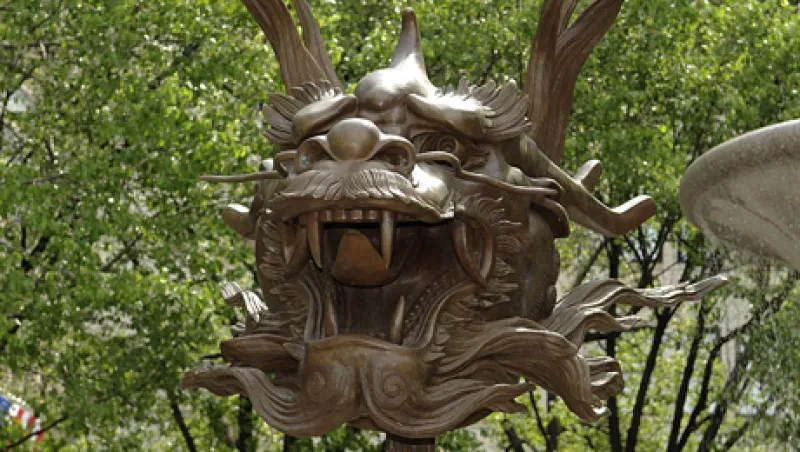All five of London hedge fund giant Sloane Robinson’s portfolios within its Global Fund lost between 5.5 percent and 10.1 percent in the second quarter. This put four of the five in the red for the entire first half, according to the firm’s June client letter.
Only the Japan (U.S. dollar) portfolio was in the black for the first half, up 7.6 percent.
The losses came on the heels of poor performance last year, when five of the hedge fund’s six major portfolios within its Global Fund at the time lost between 17.3 percent and 24.3 percent, while the sixth declined by a single-digit rate. Four of the portfolios within the Global Fund also lost money in 2010.
Little surprise, the firm’s overall size is shrinking. At year-end it managed just $4.7 billion, down from $8.1 billion at the beginning of 2011 and $15 billion at the end of 2007.
Last year the firm blamed its very poor performance on three factors — the aftermath of the March Japanese earthquake, an insufficient number of defensive investments and “a rosier view of China than has been warranted.” Sloane Robinson has long believed that China will avoid a hard landing in its economy and that a de-rating in its equity markets is unjustified.
In the June letter, Sloane Robinson points out that in its international portfolio it only made money in Japan. It lost money in stock and index derivatives in all other regions, including Hong Kong, India and the U.K.
Looking ahead, SR says it removed hedges against its European positions and bought call options on European indices and banks. It adds that it is becoming increasingly concerned about lower growth in other parts of the world. “We don’t doubt that the Federal Reserve and the Bank of England will undertake further QE,” it states in the June report. “More orthodox measures in China and Japan will, however, stand a greater chance of success in promoting demand because in both economies there is a strong and realistic prospect of a renewed credit cycle.”
SR adds this is not reflected in either stock market. “Japan, for example, trades at generational low valuations with depressed, but improving, profitability,” it states.
On emerging markets, SR asserts the main problem is that they are in a bear market, even relative to the bear market besetting the OECD markets, which comprise 34 member countries. “Emerging market equities appear cheap, but are unlikely to become suddenly and sustainably more expensive until the predictability of corporate fortunes improves,” the hedge fund states.
SR describes the current environment as being characterized by “an internal, tricky dynamic of reform/interference and the external uncertainty emanating from Europe and the world’s debt problems.” As a result, its emerging markets portfolio entered July with an emerging markets exposure of 52 percent net long in stocks and 13 percent of index exposure — mainly option positions — for a total invested position of 65 percent.
In Asia, SR tells clients that sentiment has become extraordinarily depressed in all the largest economies. And although it describes the underlying situation as “challenging,” it tells clients some of the valuations are becoming compelling. So it has lifted its positions in Hyundai Greenfood, a little known industrial catering business; Unicharm, a Japan-based personal hygiene products company; Japan Tobacco; Prudential Insurance and Yum! Brands — a play on Chinese growth.
In Japan, the firm remains 17 percent long and hedged back into U.S. dollars, using derivative option contracts to control volatility.
In what it calls the “frontier” portfolio, the largest exposure is to Nigeria, 15.7 percent, where it especially likes banks as a play on falling rates in the second half of the year driven by more favorable inflation data. Philippines, at 7.5 percent has the second largest exposure, calling it “a story of economic rebirth fuelled by the macro and micro reforms of the Aquino government combined with very positive demographics.” However, it warns that equity valuations are now at the top end of their historic range. Other top exposures include United Arab Emirates (7.2 percent), Qatar (6.9 percent) and Saudi Arabia (6.5 percent).
On a more macro level, SR points to a recent Barclays Capital study of likely real returns from major markets over the next five years. The investment bank, it seems, predicted 15 percent compound real returns from Japan, 9 percent gains from Europe and the U.K. and just 4 percent from the U.S., mainly due to a decline in currently very high operating margins. SR tells clients: “This declining profitability and fears over the U.S. fiscal cliff remain two large risks to international markets.”







